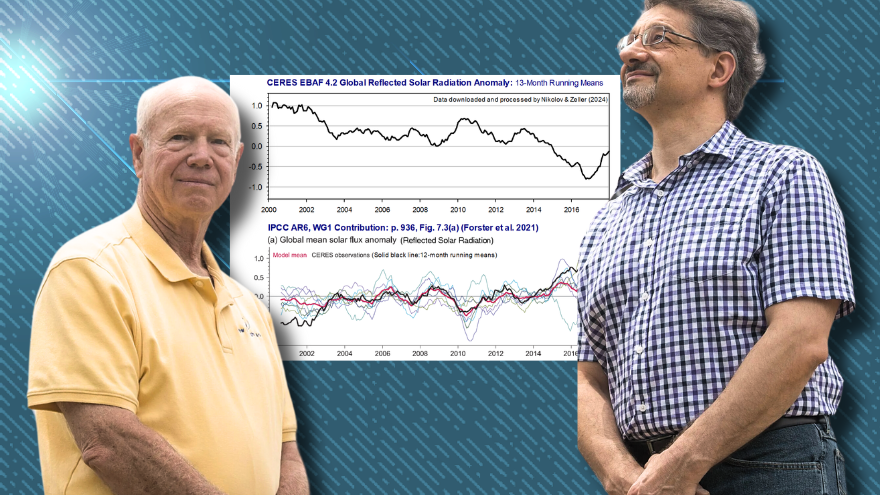Experts analyzing the report point to changes in the planet’s albedo — the fraction of the Sun’s energy reflected by Earth — as the factor driving the rise in global temperatures. Albedo fluctuations have caused Earth to reflect less solar energy and absorb more, leading to the warming trend frequently cited by activists, advocates, and policymakers focused on addressing climate change. As global leaders increasingly pursue aggressive policies to mitigate climate change, data suggesting human activity is not the primary driver could reshape public policy worldwide. In a recent interview with SCNR, Ned Nikolov, Ph.D., a scientist specializing in climate, cosmology, and astrophysics, expressed concerns about the integrity of IPCC reports, accusing the panel of manipulating climate data. Nikolov’s research, based on satellite data from NASA’s Clouds and the Earth's Radiant Energy System (CERES) project, reveals the IPCC misrepresented trends in solar and long-wave radiation by inverting the data. He argues that instead of accurately depicting that the Earth is absorbing more solar energy due to reduced cloud cover — an observation supported by NASA — the IPCC altered the data to show the opposite, suggesting less absorbed solar energy. Nikolov argues that this data inversion is no accident and suggests that the IPCC may have deliberately falsified this data to fit the widely accepted narrative of man-made climate change. The IPCC did not respond to multiple requests for comment.Data in a report from the Intergovernmental Panel on Climate Change (IPCC) suggests that Earth’s warming trend over the past two decades may not be attributable to human-related activity.
While working on a paper using CERES satellite data, I discovered that the latest IPCC Report grossly misrepresented CERES observations of reflected solar and outgoing LW radiation. Nikolov contends that all of the warming observed in the past 24 years can be explained solely by increased solar energy absorption, not by rising CO2 levels or greenhouse gases. “And this, this is not my theory,” he reiterated. “It comes directly from satellite data that NASA has provided. It's on their website.” He also pointed out broader implications for climate science, asserting that greenhouse gases like CO2 have a negligible effect on global warming compared to the role of atmospheric pressure. Karl Zeller, a climate scientist and Nikolov’s longtime research associate, criticized the IPCC’s data interpretation, noting that their models present misleading trends by inverting the actual measurements, showing an increase in albedo. He told SCNR that these discrepancies arise from how the IPCC calculates anomalies, which drastically changes the findings. The two scientists have developed a regression equation based on satellite data that predicts temperature changes resulting from variations in solar energy input. Their research suggests that most recent warming can be attributed to changes in solar radiation, not to greenhouse gases, as is widely accepted. They recently published their findings in the peer-reviewed journal Geomatics, concluding that the data “measured by CERES explain 100 percent of the observed global warming trend and 83 percent of the interannual GSAT variability over the past 24 years, including the extreme 2023 heat anomaly," which NASA stated was the warmest year on record. “These findings call for a fundamental reconsideration of the current paradigm of understanding about climate change and related socio-economic initiatives aimed at drastic reductions of industrial carbon emissions at all costs,” they wrote. Despite the significance of their conclusions, Nikolov noted the lack of response from the broader scientific community, attributing it to political and financial interests that may hinder open discussion on the issue. He called for greater transparency and scrutiny of climate data moving forward. The pair’s research highlights the potential collapse of the anthropogenic global warming narrative if these discrepancies are widely acknowledged. But, Nikolov acknowledges the difficulty in challenging such a deeply entrenched global consensus, as most media outlets and scientific institutions are reluctant to address these findings.
In Chapter 7 of WG1 Contribution, Fig. 7.3 shows INVERTED trends of reflected solar & LW fluxes! pic.twitter.com/lJqO0g7gVG
— Ned Nikolov, Ph.D. (@NikolovScience) June 21, 2024
Editor’s Note: A previous version of this article mistakenly referred to NOAA data, not IPCC data.

